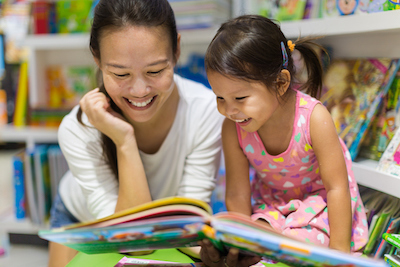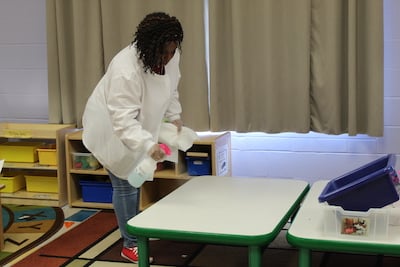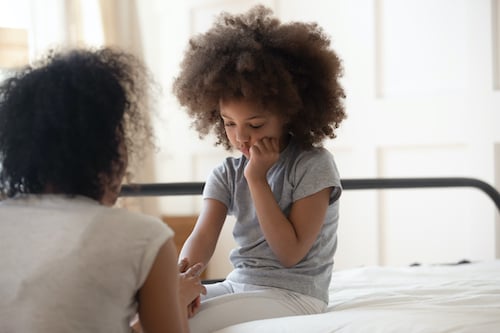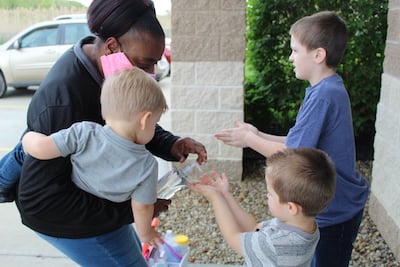With schools closed — and child care centers, as well — the traditional ways that most children learn aren’t available right now. Older children may be participating in online learning through their school system; young children, though, may not. Fortunately, there are plenty of learning resources to use and fun activities to enjoy to keep your kids engaged and learning.
Before we share specific activities or resources, USA Today shares two high-level strategies for learning at home: create a plan and include choices with that plan. This can include developing a daily schedule that’s similar to what your children usually follow at school. Post that schedule and keep to that structure as best you can. (Another expert notes that you can somewhat modify the school’s schedule; so if getting started at 8 a.m. has been a problem for your child, start yours at 9.)
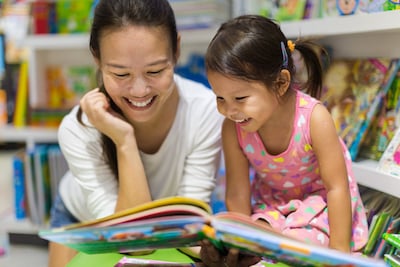
There are national calendar days that can help you pick a theme for each day. You can seek out interesting trivia to share on the topic of the day and then build age-appropriate lesson plans around that theme. On National Artichoke Day, for example, math questions can include how many artichokes your child would have if Mom gave him five and Dad gave him two more.
You can also create choice boards that give your children assignment options on a subject and/or to list acceptable free-time activities. Here is more information about how to create choice boards.
Learning Resources: Books, Books, Books
First, take a look at what books you have in your home. How can you use them for learning at home during school closures?
ReadingRockets.org provides age-specific recommendations for fiction and non-fiction books in 24 different categories, from bugs, birds, and animals to builders and buildings, and from dinosaurs to music and musicians, and much more. This site also includes hands-on activities that can go along with each category. For online learning, the site includes mobile apps to consider for each theme. Here, for example, are the recommended apps for the bugs, birds and animals category.
You can purchase the books you choose, or you can see if your library has them in eBook or audiobook forms. Many libraries, even when closed because of COVID-19, are still providing online books. Plus, Audible.com is offering a free collection of audiobooks for young children, available in six languages.
We encourage you to explore the ReadingRockets.org site in detail because there is an incredible depth of online learning resources and recommendations to help children learn. This is a time when the strategic use of screen time can be quite helpful.
Science Experiments: Making COVID-19 a Learning Experience
The Washington Post suggest that you use this time to help kids learn about germs and to share how washing with soap and water can kill germs and keep people safe. Depending upon the age of your children, you can also study the history of other pandemics, such as polio, smallpox and the Spanish flu.
Don’t Forget Recess!
When young children feel cooped up, they can get restless. To help, the BBC has collaborated to create Super Movers, a program that provides fun activities that can be enjoyed in your own home. Even better, this program is “curriculum-linked” to keep your kid engaged and learning through movement, even in a limited space. BBC offers plenty more resources that are ideal during school closures, including live lessons for young children.
As far as movement goes, this is the ideal time to “ditch the desk.” If your child gets the wiggles when sitting for too long, he or she can read while riding an exercise bike or sitting in a favorite branch of a tree (this automatically cuts back on screen time, which can be beneficial). Your child can jog down the driveway after completing three math problems or do some jumping jacks.
Bonus Tip
With school closed, this is the ideal time to help your children catch up in areas of schoolwork where they may face challenges. Or, you can keep your ultra curious kids engaged by allowing them to move ahead of the curriculum in areas of special interest. Kids learn at different paces and this is a wonderful opportunity to match their learning styles and help them move ahead in ways that work well for them.



